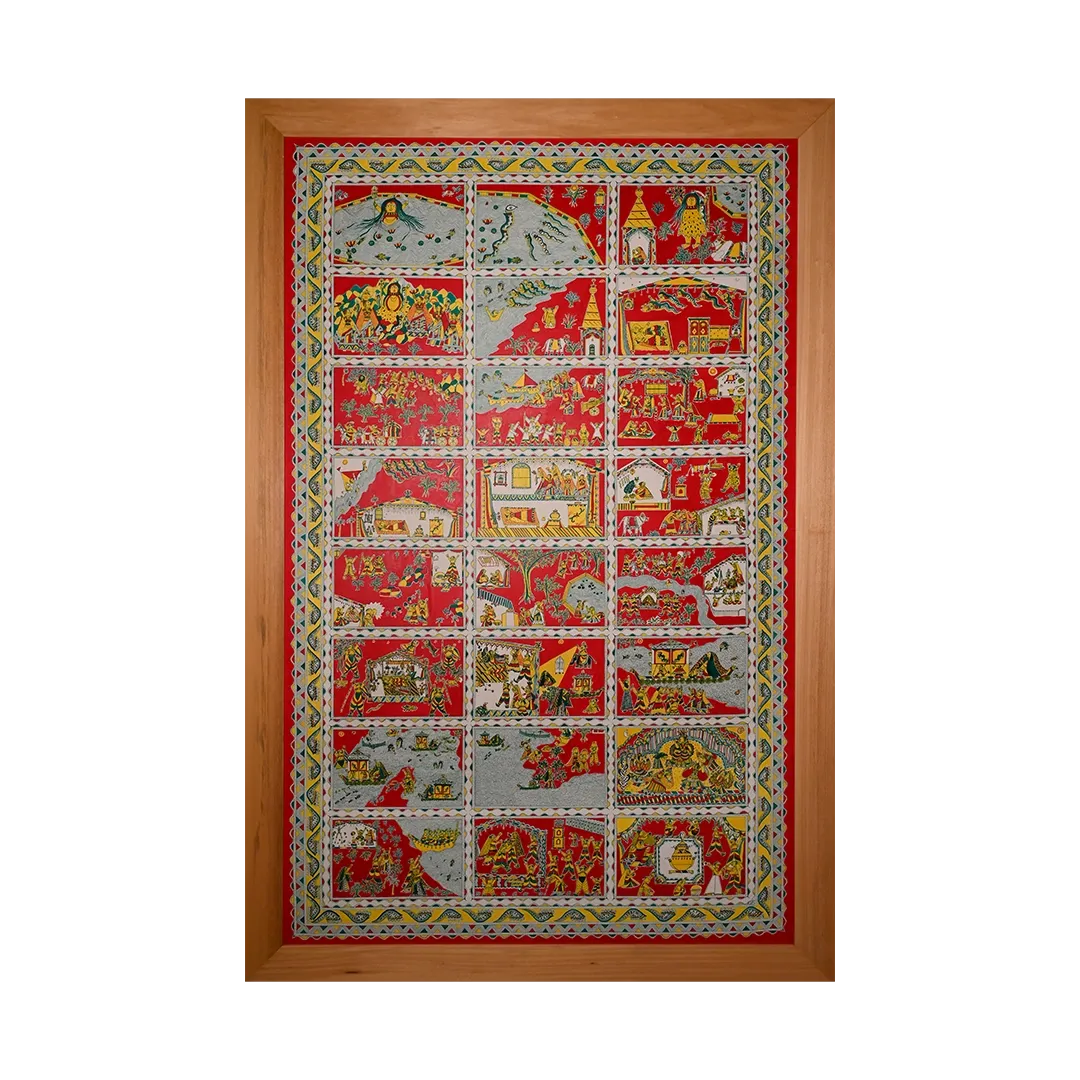

Manjusa art is a traditional folk painting style from Bhagalpur and its surrounding areas in Bihar. It is rooted in the local legend of Bihula-Vishahari, a tale of the journey from the darkness of death to the light of life. This story represents the triumph of joy over sorrow and is also a symbol of women’s empowerment. The complete pictorial depiction of Bihula’s journey—her fight against death and her struggle for social dignity—is what defines Manjusa art.
Manjusa art gets its name from the Manjusa, a temple-shaped box traditionally made using materials like sola, sanai wood, bamboo or jute fibres. This box is then covered with white paper, on which various episodes and characters from the Bihula-Vishahari story are painted in blue, yellow and pink. Over the years, Manjusa art has grown beyond its traditional roots. Once limited to Manjusas and pots, it is now painted on canvas, paper and fabric.
Artist Ulupi Kumari has been promoting Manjusa art, alongside other artists. A state awardee in Manjusa painting, Ulupi Kumari has depicted the entire Bihula-Vishahari story in her artwork. The folk lore is represented in a sequence across different panels. Her work illustrates scenes such as Shiva bathing in Sonadah, Chand Saudagar, the sacred pot (Kalash), snakes, Bihula, Vishahari, Lakhindar, Netula Dhobi, the heavenly realm and the Ganges river. She has also incorporated elements of nature and space. In one section of her painting, the five sisters of Vishahari are shown together in their serpent forms. The forms have open hair to show their strength and fierce character.